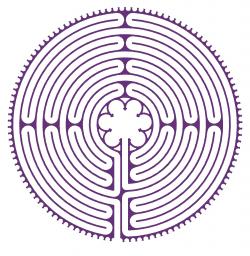
- About
- Spiritual Life
- Interfaith Engagement
- Student Leadership
- Sacred Spaces
- Events
Back to Top Nav
Back to Top Nav
Back to Top Nav
Back to Top Nav
Back to Top Nav
In 2008, Rollins Chapel became home to a 24-foot-square custom 13th circuit labyrinth, modeled after the one in Chartres Cathedral, France. It is maintained by the Tucker Center and was made possible with the support of the Office of Institutional Diversity and Equity. Students, faculty and community members are free to use the labyrinth during regular chapel hours, unless a special event or group has reserved the space.
You are welcome to walk the labyrinth in Rollins Chapel as slowly, quickly, and as often as you like.
Though there is no right or wrong way to walk the labyrinth, we offer the following suggestions as a guide for those who seek some direction.
If you have questions or concerns about the labyrinth or if you have suggestions for additional uses for the labyrinth, please contact the Tucker Center.
Traditionally, there are three stages to a labyrinth walk (adapted from TMC Hospice brochure: Labyrinth & Centering Garden: Walking Guide).
This is a letting go of the clutter in our minds, a shedding of distractions that prevent us from being present to ourselves and our bodies. The focus is on quieting the mind and opening the heart.
A place to reflect, gain insight, center, meditate or pray. This is a place of listening to the inner life.
A time for integration and gratitude, carrying back into the world new insights and new strength for transformation.

Although the styles and patterns have changed over time, labyrinths such as the one in Rollins Chapel have been in use for more than 3500 years. The tradition of walking the labyrinth cannot be traced solely to one religious tradition and, in fact, it's not clear whether it originated around any spiritual beliefs in the first place. It is apparent, however, that labyrinths have been used for meditative purposes by several religious traditions.
Like prayers or meditation, the experience of walking the labyrinth varies with the individual. For some, it is a relaxing and soothing experience and for others it is an aid to prayer.
This labyrinth is not a maze and there are no dead ends – simply follow the path with confidence that you will reach the end. As is true of our life journey, as humans we all take a similar journey full of twists, turns, and unknowns.